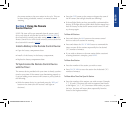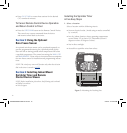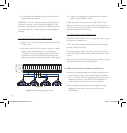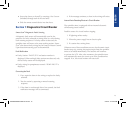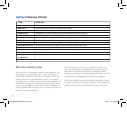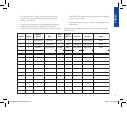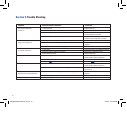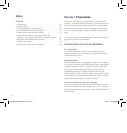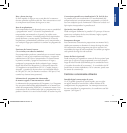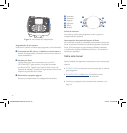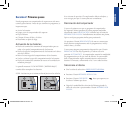
17
ENGLISH
Cycle Start Time
Master Valve
Multiple Start Times
Program (A or B)
Rain Delay
Solenoid
Sprinkler Timer
Stacking
Station (Watering Station)
Terminal
Watering Program
Watering Restrictions
Watering Valve
(Irrigation Valve)
Zones
TERM
DEFINITION
The time the program begins watering the cycle
A valve that prohibits water from reaching station valves
A feature that allows a program to be operated multiple times on the same day
A schedule for a group of stations that determines the date and time for watering
A feature that prevents the sprinkler timer from running it's scheduled watering program for a specific duration
The electrical part on a sprinkler (irrigation) valve that opens and closes the valve
A device that is responsible for turning an automatic irrigation system on and off
When a start time is scheduled to begin before the previous cycle has completed
An area where the watering (irrigation) is all controlled by a single control valve
The connection point on the docking port where a wire is inserted
See “Program (A or B)”
Specific days and/or times that local municipalities prohibit watering
Used in conjunction with sprinkler timers – a convenient way to deliver water to lawns, plants and gardens
See “Station (Watering Station)”
A
A
B
B
Program
Days of Week
Days of Week
Odd/Even
Interval
Watering
Option
1
2
3
4
Station
M, W, Sat
M, W, Sat
Every other day
Every 5 days
Days
5:00 AM
6:45 AM
9:00 PM
Start
Time
15 min
15 min
30 min
30 min
Duration
Minutes
Front Strip
Front, North
Back, North
Front
Location
Spray Heads
Spray Heads
Gear Drive
Shrub Head
Sprinkler
Grass
Grass
Grass
Shrubs and Flowers
Plants
1. For each station (or valve) write down the watering
location, the type of sprinkler head and the types of
plants to be watered.
2. Using this list, determine the recommended watering
duration (for each type of sprinkler head and the
vegetation to be watered) and frequency for each station.
IMPORTANT: Be aware of any watering restrictions through
your local water district.
3. Determine, based on step 2, the ideal watering option for
each station.
Based on the preceding information your water program may
look like this:
07WTM002598 57926-24 rA.indd 17 2/16/07 2:07:25 PM





